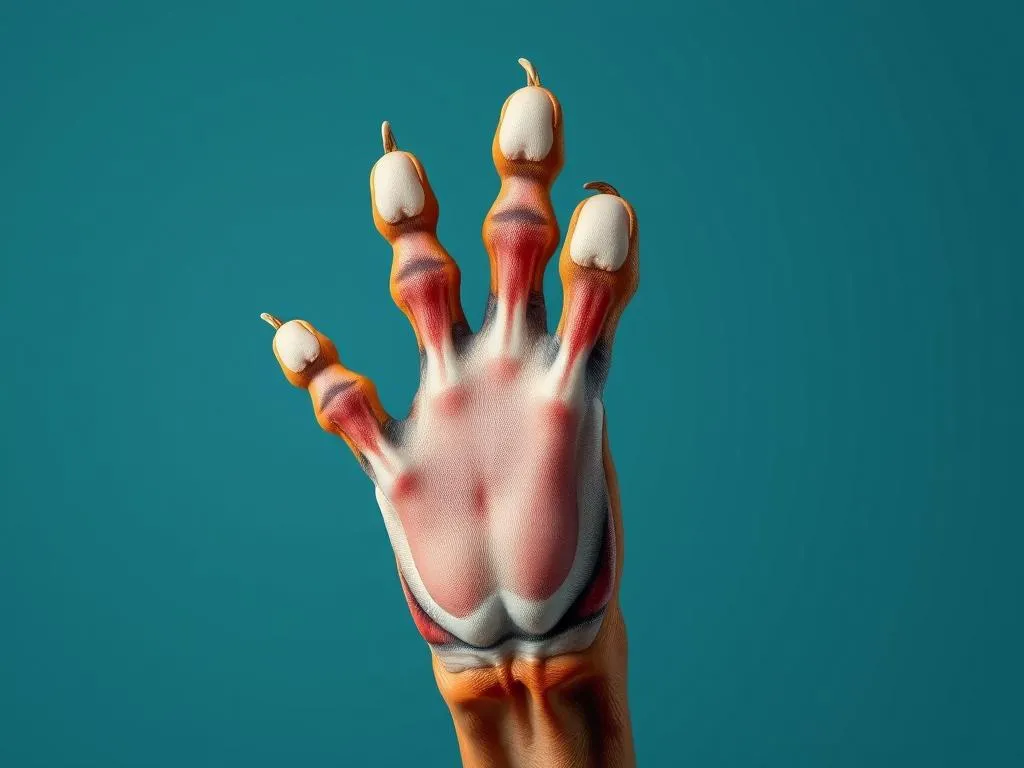
Introduction
Taking care of our furry friends involves more than just feeding and loving them; it also means understanding their health, especially their dog paw anatomy. The paws are one of the most crucial parts of your dog’s body, serving as their primary means of mobility and interaction with the environment. A well-cared-for paw can mean the difference between an active, happy dog and one that struggles with discomfort or pain.
Understanding the anatomy of dog paws is not just for veterinarians; it’s essential for pet owners too. It helps in recognizing potential problems early and ensuring that your pet enjoys a healthy lifestyle. In this article, we will delve into the structure of dog paws, explore common issues, and provide comprehensive tips on how to maintain your dog’s paw health.
Basic Anatomy of Dog Paws
Structure of the Paw
The complex structure of a dog’s paw consists of several key components: pads, toes, and claws.
- Pads: These are the soft, fleshy parts on the bottom of the paw that provide shock absorption and traction. They come in various shapes and sizes depending on the breed and size of the dog.
- Toes: Each paw generally has four toes and one dewclaw, which is a vestigial digit that doesn’t touch the ground. The structure of the toes includes bones and joints that help in movement and balance.
- Claws: The claws provide traction and help dogs dig, grip, and stabilize themselves while running or playing.
Different breeds exhibit noticeable differences in their paw structure. For example, small breeds may have more delicate paws, while larger breeds have robust, wider paws designed for greater weight-bearing.
The Role of Each Component
Understanding the function of each part of the paw can help you appreciate their significance to your dog’s overall health.
- Paw Pads: They act as shock absorbers when your dog runs or jumps, reducing the impact on their joints. Additionally, the pads provide grip, allowing dogs to run on various surfaces without slipping.
- Claws: Beyond aesthetics, claws play a crucial role in a dog’s mobility. They help with traction on slippery surfaces and are essential for digging and playing.
- Toe Structure: The bones and joints in the toes allow for flexibility and movement. Each toe has a specific range of motion that contributes to a dog’s agility and ability to navigate different terrains.
Common Paw Problems
Injuries and Trauma
Dog paws are susceptible to various injuries, including cuts, abrasions, and fractures.
- Cuts and Abrasions: These can occur from sharp objects, rough terrain, or even hot pavement. It’s essential to watch for signs of injury, such as limping or licking at the paw.
- Fractures: A more severe injury, fractures can result from accidents or falls. Symptoms include swelling and an inability to put weight on the paw.
Infections
Infections can affect the paws, leading to discomfort and more severe health issues.
- Bacterial Infections: These can occur from cuts or scrapes that become infected. Symptoms include swelling, redness, and discharge.
- Fungal Infections: Yeast infections can develop in moist areas of the paw, particularly between the toes. Symptoms can include itching and a foul odor.
To prevent infections, keeping your dog’s paws clean and dry is crucial.
Skin Conditions
Dogs can suffer from various skin conditions that affect their paws, including allergies and dermatitis.
- Allergies: Environmental allergens, such as pollen or dust, can lead to itchy, inflamed skin on the paws.
- Dermatitis: This condition can arise from irritants, leading to redness, swelling, and discomfort.
Regular paw inspections can help catch these issues early, allowing for prompt treatment.
Importance of Paw Care
Regular Inspection
Inspecting your dog’s paws regularly is crucial for maintaining their health.
- What to Look For: During inspections, check for foreign objects lodged in the pads, redness, swelling, or any signs of injury. Performing this check after walks can help catch potential problems early.
Grooming Practices
Proper grooming is essential for healthy paws.
- Nail Trimming: Keeping your dog’s nails trimmed is vital to prevent overgrowth, which can cause pain and lead to injuries. Use appropriate tools and techniques, and consult your veterinarian for guidance on how often to trim.
- Cleaning Paw Pads: Regularly clean your dog’s paw pads to remove dirt, debris, or potential irritants. Use a damp cloth or pet-safe wipes for a thorough clean.
Seasonal Care
Different seasons bring unique challenges for paw care.
- Winter Precautions: Cold weather can lead to cracked paw pads and frostbite. Watch for signs of discomfort when walking on salt or ice, and consider using dog booties for protection.
- Summer Care: Hot pavement can burn paw pads, so avoid walking your dog during peak heat. Be cautious of allergies that can flare up during summer months.
Nutrition and Paw Health
Link Between Diet and Paw Health
What your dog eats plays a significant role in their overall health, including their paws.
- Essential Nutrients: A balanced diet rich in omega fatty acids, vitamins, and minerals supports skin health, which in turn affects the paws. Foods high in omega-3 and omega-6 fatty acids can promote healthy skin and coat.
- Foods to Include and Avoid: Incorporate lean proteins, healthy fats, and a variety of fruits and vegetables. Avoid foods that can cause allergies or sensitivities.
Supplements for Paw Health
Sometimes, dietary supplements can enhance paw health.
- Beneficial Supplements: Omega fatty acids and glucosamine can support joint health and maintain skin integrity. Always consult your veterinarian before starting any new supplements for your dog.
When to Seek Veterinary Care
Signs Your Dog Needs Professional Help
Recognizing when to seek veterinary assistance is crucial for your dog’s health.
- Warning Signs: Look out for persistent limping, swelling, excessive licking, or visible injuries. These symptoms may indicate underlying issues that require professional evaluation.
Common Veterinary Procedures for Paw Issues
Veterinarians may perform several procedures to diagnose and treat paw problems.
- Diagnostic Tests: X-rays can help identify fractures or joint issues, while cultures can determine the presence of infections.
- Treatment Options: Depending on the diagnosis, treatment may include medications, topical ointments, or, in severe cases, surgery.
Preventive Measures for Healthy Paws
Regular Vet Check-Ups
Routine veterinary check-ups are essential for maintaining paw health.
- Importance of Routine Examinations: Regular check-ups enable early detection of potential issues, ensuring your dog stays healthy and active.
Lifestyle Changes
Incorporating lifestyle changes can benefit your dog’s overall paw health.
- Proper Exercise Routines: Regular exercise strengthens paw muscles and improves circulation, promoting healthy paw function.
- Weight Management: Maintaining a healthy weight reduces stress on the paws and joints, leading to overall better health.
Environmental Considerations
Be mindful of the environment in which your dog walks and plays.
- Safe Walking Surfaces: Avoid walking your dog on rough or excessively hot surfaces. Opt for grassy areas or shaded paths when possible.
Conclusion
Understanding dog paw anatomy is crucial for any pet owner who wants to ensure their furry companion remains healthy and happy. By recognizing the significance of each component of the paw and being aware of common issues, you can take proactive steps to maintain your dog’s paw health. Regular inspections, proper grooming, a balanced diet, and preventive care all contribute to a better quality of life for your dog.
By applying these practices and staying informed about your dog’s needs, you can help ensure that their paws remain in top condition, allowing them to enjoy all the activities they love. Remember, a little attention goes a long way in promoting your dog’s overall health and well-being.









